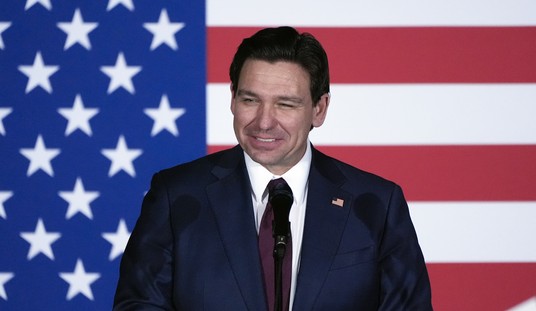A sense of unreality overshadows our debate on Afghan war policy across the spectrum of opinions. The unreality derives from the simple fact that we do not have enough troops to rationally implement an adequate defense of our national interests. So every argument for Afghanistan policy tends to seem unserious, perhaps pointless.

For example, Gen. Stanley McChrystal's proposal calls for a counterinsurgency, or COIN, war modeled on the U.S. Army/Marine Corps Counterinsurgency Field Manual, developed by Gen. David Petraeus with strong input from Gen. McChrystal. Pursuant to that standard, to fully man a COIN strategy, we would need 20 to 25 troops per 1,000 residents in Afghanistan. That would require 600,000 U.S., NATO and Afghan troops and police.
According to CNN, at the height of the Iraq surge, there were 29 troops for every 1,000 residents. Currently, there are about 260,000 U.S., NATO and Afghan troops on the ground, about 11 troops per 1,000 residents. With the additional 30,000 U.S. troops plus 5,000 more NATO troops, the force density rate will go up to 12.5 troops for every 1,000 residents -- barely half of what is needed to reasonably hope for success. Moreover, the history of COINs -- from the Philippines to Algeria to Malaya to Vietnam -- is that they will take many years to succeed, if then.
Notwithstanding that guidance, Gen. McChrystal asked for only 40,000 more troops because, obviously, we do not have another 340,000 troops available. And given that the word from some of our troops in Afghanistan is that the Afghan National Army more or less refuses to fight, we are not going to find another 300,000 adequate fighting soldiers from the locals in the next year or two.
Notwithstanding the insufficient number of troops requested by the general, President Barack Obama basically has endorsed the McChrystal recommendations -- with a time-sensitive exit strategy added on. In the president's words: "I do not make this decision lightly. I make this decision because I am convinced that our security is at stake in Afghanistan and Pakistan. This is the epicenter of violent extremism practiced by al-Qaida. ... This is no idle danger, no hypothetical threat. In the last few months alone, we have apprehended extremists within our borders who were sent here from the border region of Afghanistan and Pakistan to commit new acts of terror. And this danger will only grow if the region slides backwards and al-Qaida can operate with impunity."
Recommended
The president went on in his West Point speech to explain why he was not endorsing the calls of others for "a more dramatic and open-ended escalation of our war effort": "I reject this course because it sets goals that are beyond what can be achieved at a reasonable cost and what we need to achieve to secure our interests."
So even though "our security is at stake in Afghanistan and Pakistan," we must make do without goals that are "beyond what can be achieved at a reasonable cost."
Note that the reason the president said he is increasing our troop strength is to "deny al-Qaida a safe haven. We must reverse the Taliban's momentum and deny it the ability to overthrow the government." Yet because we don't have sufficient troops, our strategy is merely to hold larger cities and towns, do what we can to build up the Afghan army and government, and start leaving in 18 months -- inevitably al-Qaida will continue to have "safe haven" in much of the countryside bordering Pakistan -- even if we succeed wherever we try to regain control.
Along with that critical strategic shortcoming of our new Afghanistan/Pakistan policy, critics of the president's escalation point out that al-Qaida easily can find safe haven in Yemen, as well as Somalia and other parts of the Horn of Africa. (The jungles of South America and Central America could be added to that list, as could parts of the dense cities of Hamburg, London, Paris, Rotterdam and Falls Church, Va.) But because we clearly don't have enough troops to gain control of those other areas, the administration and its Republican defenders largely ignore that gibe.
The failure of the war advocates to match up their correct description of the danger from radical Islamic terror violence with the U.S. troop strength needed to hold it back is what gives an unrealistic, almost insincere, air to the entire debate.
On Dec. 8, 1941, when the United States declared war on Japan, the U.S. Army's strength was about 1.6 million. The Navy level was about 330,000. But President Franklin D. Roosevelt did not limit his strategy to what his generals could do with those soldier and sailor levels. FDR designed a strategy for victory -- and back-engineered the necessary troop levels. By December 1942, the Army was up to about 5.4 million. By the spring of 1945, it was more than 8 million, and the Navy had more than 4 million men (out of a total U.S. population of 139 million). Victory can come at that high a price.
But neither former President George W. Bush nor President Obama (nor, I'm sure, the American public) would consider, for example, a draft (as I advocated in my most recent book, "American Grit") to increase our fighting capacity. That level of sacrifice, necessary to gain safety from the still-gathering threat of radical Islam, is beyond current American sensibilities.
So United States governments (both Republican and Democratic) propose half-measures -- and receive only half-support. People reasonably ask themselves why we should sacrifice life and treasure for a plan that won't even work.

























Join the conversation as a VIP Member